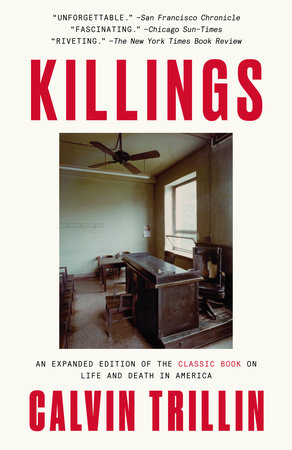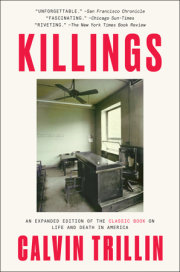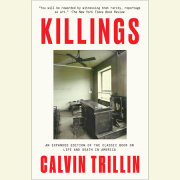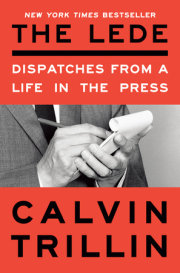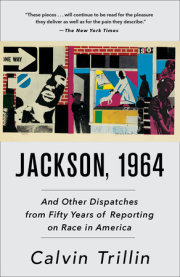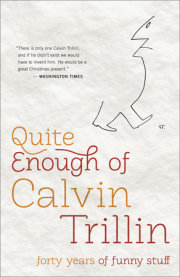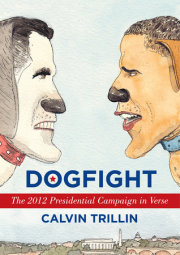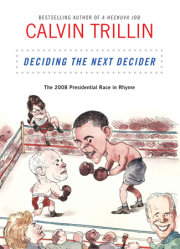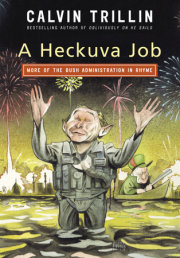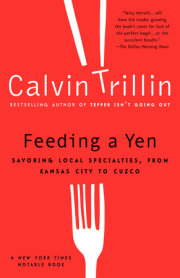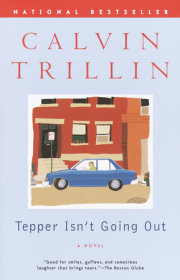A Stranger with a Camera
Jeremiah, Kentucky
APRIL 1969
On a bright afternoon in September, in 1967, a five-man film crew working in the mountains of Eastern Kentucky stopped to take pictures of some people near a place called Jeremiah. In a narrow valley, a half-dozen dilapidated shacks—each one a tiny square box with one corner cut away to provide a cluttered front porch—stood alongside the county blacktop. Across the road from the shacks, a mountain rose abruptly. In the field that separated them from the mountain behind them, there were a couple of ramshackle privies and some clotheslines tied to trees and a railroad track and a rusted automobile body and a dirty river called Rockhouse Creek. The leader of the film crew was a Canadian named Hugh O’Connor. Widely acclaimed as the co-producer of the Labyrinth show at Expo 67 in Montreal, O’Connor had been hired by Francis Thompson, an American filmmaker, to work on a film Thompson was producing for the American pavilion at HemisFair in San Antonio. O’Connor went up to three of the shacks and asked the head of each household for permission to take pictures. When each one agreed, O’Connor had him sign the customary release forms and gave him a token payment of ten dollars—a token that, in this case, happened to represent a month’s rent. The light was perfect in the valley, and the shooting went well. Theodore Holcomb, the associate producer of the film, was particularly struck by the looks of a miner, still in his work clothes and still covered with coal dust, sitting in a rocking chair on one of the porches. “He was just sitting there scratching his arm in a listless way,” Holcomb said later. “He had an expression of total despair. It was an extraordinary shot—so evocative of the despair of that region.”
The shot of the coal miner was good enough to be included in the final version of the film, and so was a shot of a half-dozen children who, somehow, lived with their parents in one of the tiny shacks. After about an hour and a half, the crew was ready to leave, but someone had noticed a woman come out of one of the shacks and go to the common well to draw some water, and she was asked to repeat the action for filming. As that last shot was being completed, a woman drove up and told the filmmakers that the man who owned the property was coming to throw them off of it. Then she drove away. A couple of minutes later, another car arrived, and a man—a thin, bald man—leaped out. He was holding a pistol. “Get off my property!” he shouted again and again. Then he shot twice. No one was hit. The filmmakers kept moving their equipment toward their cars across the road while trying to tell the man that they were leaving. One of them said that the man must be shooting blanks. “Get off my property!” he kept screaming. Hugh O’Connor, who was lugging a heavy battery across the highway, turned to say that they were going. The man held the pistol in both hands and pulled the trigger again. “Mr. O’Connor briefly looked down in amazement, and I saw a hole in his chest,” Holcomb later testified in court. “He saw it and he looked up in despair and said, ‘Why did you have to do that?’ and, with blood coming from his mouth, he fell to the ground.”
Whitesburg, a town about twelve miles from Jeremiah, is the county seat of Letcher County—headquarters for the county court, the sheriff, and assorted coal companies and antipoverty agencies. Word that someone had been killed reached Whitesburg quickly, but for a couple of hours there was some confusion about just who the victim was. According to various stories, the dead man had been a representative of the Army Corps of Engineers, a VISTA volunteer, or a CBS cameraman—any of whom might qualify as a candidate for shooting in Letcher County. The Corps of Engineers had proposed building the Kingdom Come Dam across Rockhouse Creek, thereby flooding an area that included Jeremiah, and some opponents of the dam had been saying that the first government man who came near their property had better come armed. Throughout Eastern Kentucky, local political organizations and coal-mining interests had warned that community organizers who called themselves Vistas or Appalachian Volunteers or anything else were nothing but another variety of Communists—three of them had been arrested on charges of attempting to overthrow the government of Pike County—and even some of the impoverished people whom the volunteers were supposedly in Kentucky to help viewed them with fear and suspicion. A number of television crews had been to Letcher County to record the despair that Holcomb saw in the face of the miner sitting on the front porch. Whitesburg happens to be the home of Harry M. Caudill, a lawyer who drew attention to the plight of the mountain people in 1963 with an eloquent book called Night Comes to the Cumberlands. Television crews and reporters on a tour of Appalachia are tempted to start with Letcher County in order to get the benefit of Caudill’s counsel, which is ordinarily expressed in a tone of sustained rage—rage at the profit ratio of out-of-state companies that take the region’s natural resources while paying virtually no taxes, rage at the strip mines that are gouged across the mountains and at the mudslides and floods and pollution and ugliness they cause, rage at the local merchants and politicians who make a good living from the trade of welfare recipients or the retainers of coal companies and insist that there is nothing wrong with the economy, and, most of all, rage at the country that could permit it all to happen. “Look what man hath wrought on that purple mountain’s majesty,” he will say as he points out the coal waste on the side of a mountain that had once been beautiful. “A country that treats its land and people this way deserves to perish from the earth.”
In the view of Caudill and of Tom Gish, the liberal editor of The Mountain Eagle, a Letcher County weekly, the reactions of people in Jeremiah to the presence of O’Connor’s film crew—cooperation by the poor people being photographed in their squalid shacks, rage by the man who owned the shacks—were characteristic of Letcher County: a lot of people who are still in Eastern Kentucky after years of welfare or subsistence employment have lost the will to treat their situation as an embarrassment, but outside journalists are particularly resented by the people who have managed to make a living—running a country store or a filling station or a small truck mine, working for the county administration, managing some rental property. They resent the impression that everyone in Eastern Kentucky is like the people who are desperately poor—people whose condition they tend to blame on “just sorriness, mostly.” In Letcher County, fear of outsiders by people who are guarding reputations or economic interests blends easily into a deep-rooted suspicion of outsiders by all Eastern Kentucky mountain people, who have always had a fierce instinct to protect their property and a distrust of strangers that has often proved to have been justified. All of the people in Letcher County—people who live in the shacks up remote hollows or people who run stores on Main Street in Whitesburg—consider themselves mountain people, and, despite an accurate story in The Mountain Eagle, many of them instinctively believed that the mountaineer who killed Hugh O’Connor was protecting his property from smart-aleck outsiders who wouldn’t leave when they were told.
The mountaineer’s name was Hobart Ison. There have always been Isons in Letcher County, and many of them have managed somewhat better than their neighbors. Hobart Ison had inherited a rather large piece of land in Jeremiah—he raised chickens and rented out shacks he himself had built and at one time ran a small sawmill—but he was known mainly as an eccentric, mean-tempered old man. Everyone in Letcher County knew that Hobart Ison had once built and furnished a house for his future bride and—having been rejected or having been afraid to ask or having had no particular future bride in mind—had let the house remain as it was for thirty years, the grass growing up around it and the furniture still in the packing crates. He had occasionally painted large signs attacking the people he thought had wronged him. He was easily enraged by people hunting on his property, and he despised all of the local Democrats, whom he blamed for injustices that included dismissing him from a post-office job. A psychiatrist who examined him after the shooting said, “Any reference to ‘game warden’ or ‘Democrat’ will provoke him tremendously.” Once, when some local youths were taunting him, he took a shot at them, hitting one in the shoulder. “A lot of people around here would have welcomed them,” Caudill said of the filmmakers. “They just happened to pick the wrong place.”
Streams of people came to visit Ison in the Letcher County jail before he was released on bail. Women from around Jeremiah baked him cakes. When his trial came up, it proved impossible to find a jury. The Letcher County commonwealth’s attorney and Caudill, who had been retained by Francis Thompson, Inc., secured a change of venue. They argued that Ison’s family relationship in Letcher County was “so extensive as to comprise a large segment of the population,” and, through an affidavit signed by three citizens in a position to know public opinion, they stated that “the overwhelming expression of sentiment has been to the effect that the defendant did right in the slaying of Hugh O’Connor and that he ought to be acquitted of the offense of murder.”
Harlan County is a mountain or two away from Letcher County. In the town of Harlan, benches advertising Bunny enriched bread stand outside the front door of the county courthouse, flanking the First World War monument and the Revolutionary War monument and the plaque recalling how many Kentucky courthouses were burned down by each side during the Civil War. On the ground floor of the courthouse, the men who habitually gather on the plain wooden benches to pass the time use old No. 5 cans for ashtrays or spittoons and a large container that once held Oscar Mayer pure lard as a wastebasket. In the courtroom, a plain room with all of its furnishings painted black, the only decoration other than pictures of the men who have served as circuit judge is a framed poster in praise of the country lawyer—and also in praise, it turns out upon close reading, of the Dun & Bradstreet corporation. The front door of the courthouse is almost always plastered with election stickers. In the vestibule just inside, an old man sits on the floor behind a display of old pocketknives and watchbands and billfolds and eyeglass cases offered for sale or trade.
The commonwealth’s attorney of Harlan County is Daniel Boone Smith. Eight or nine years ago, Smith got curious about how many people he had prosecuted or defended for murder, and counted up seven hundred and fifty. He was able to amass that total partly because of longevity (except for a few years in the service during the Second World War, he has been commonwealth’s attorney continuously since 1933), partly because he has worked in an area that gives anyone interested in trying murder cases plenty of opportunity (the wars between the unions and the coal operators in Harlan County during the thirties were almost as bloody as the mountain feuds earlier in the century), and partly because he happens to be a quick worker (“Some people will take three days to try a murder case,” he has said. “I usually get my case on in a day”). During his first week as commonwealth’s attorney of Harlan and an adjoining county, Smith tried five murder cases. These days, Harlan County may have about that many a year, but it remains a violent place. The murders that do occur in mountain counties like Harlan and Letcher often seem to occur while someone is in a drunken rage, and often among members of the same family—a father shooting a son over something trivial, one member of a family mowing down another who is breaking down the door trying to get at a third. “We got people in this county today who would kill you as quick as look at you,” Smith has said. “But most of ’em are the type that don’t bother you if you leave them alone.” Smith is known throughout Eastern Kentucky for his ability to select jurors—to remember which prospective juror’s uncle may have had a boundary dispute with which witness’s grandfather twenty years ago—and for his ability to sum up the case for them in their own language once the evidence has been heard. He is an informal, colloquial, storytelling man who happens to be a graduate of Harvard Law School.
A lack of fervor about convicting Hobart Ison was assumed in Harlan County when he came up for trial there in May 1968. “Before the case, people were coming up and saying, ‘He should’ve killed the son of a bitch,’ ” Smith said later. “People would say, ‘They oughtn’t to make fun of mountain people. They’ve made enough fun of mountain people. Let me on the jury, Boone, and I’ll turn him loose.’ ” Smith saw his task as persuading the citizens and the jurors that the case was not what it appeared to be—that the filmmakers were not “a bunch of privateers and pirates” but respectable people who had been commissioned by the United States government, that the film was not another study of how poor and ignorant people were in Eastern Kentucky but a film about the whole United States in which the shots of Eastern Kentucky would take up only a few seconds, that the filmmakers had behaved properly and politely to those they were photographing. “Why, if they had been smart alecks come to hold us up to ridicule, I’d be the last man to try him,” Smith assured everyone. It took Smith only a day or so to present his case against Hobart Ison, although it took three days to pick the jury. On the witness stand, the surviving filmmakers managed to avoid admitting to Ison’s lawyers that it was the appalling poverty of his tenants that had interested them; they talked about being attracted by expressive family groups and by the convenience of not having to move their equipment far from the road. The defense asked if they were planning to take pictures of the Bluegrass as well as Appalachia. Were they going to make a lot of money from the film? How many millions of viewers would see the pictures of poor Eastern Kentucky people? Had they refused to move? Had they taunted Ison by saying he was shooting blanks? Did the people who signed the release forms really know what they were signing? (At least one of the signers was, like one out of four of his neighbors, unable to read.)
Copyright © 2017 by Calvin Trillin. All rights reserved. No part of this excerpt may be reproduced or reprinted without permission in writing from the publisher.

